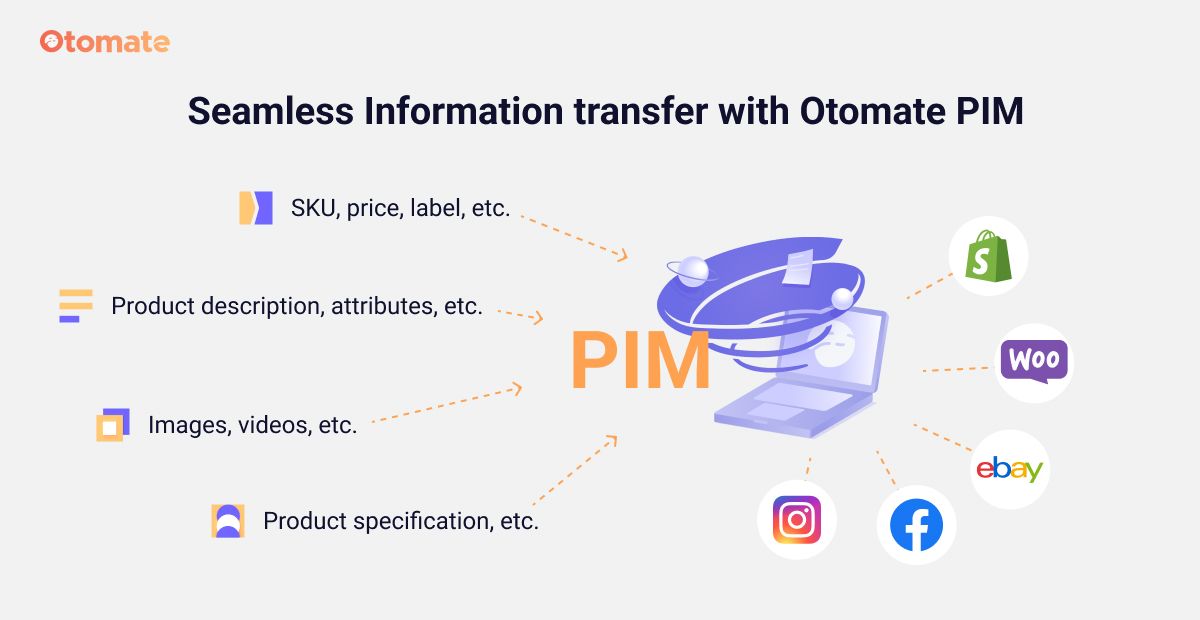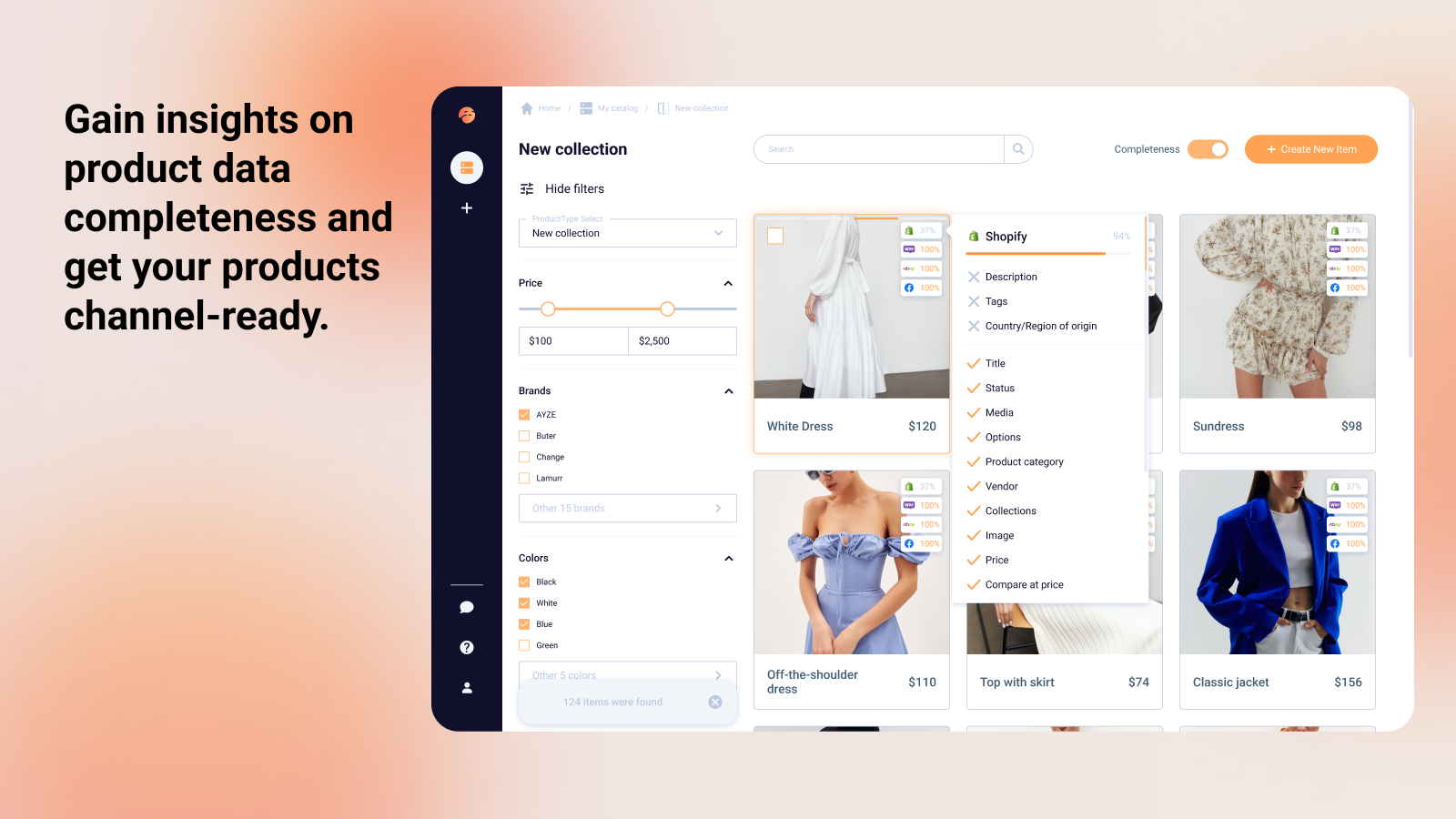PIM vs. CMS: Navigating the Content Management Intricacies
Let’s demystify PIM and CMS, exploring their distinct features and use cases. Understanding the strengths and limitations of each system is essential in determining which solution can best streamline your digital content and product information workflows.

Let’s continue our adventurous trip into the world of content management. Here, two similar but still different players stand out: Product Information Management (PIM) and Content Management Systems (CMS). While they both play crucial roles in managing digital content, their functionalities and purposes often intersect and diverge in unique ways. This leads to a common quandary for businesses - PIM or CMS, which is the right tool for your digital strategy?
Table of contents
- What Is an eCommerce CMS Tool?
- What is a PIM Tool?
- PIM vs. CMS: Top 5 Differences
- How to Use a PIM and a CMS for Your Business Growth
- The Perfect Harmony of CMS and PIM in eCommerce Success
What Is an eCommerce CMS Tool?
In the digital world, a CMS is a critical tool for businesses to manage and display their online content effectively. But what exactly is an eCommerce CMS, and how does it function in the bustling world of online retail?
An eCommerce CMS is a software platform designed to help businesses create, manage, and modify content on their online storefronts without the need for specialized technical knowledge.
In other words, it's the backbone of an online retail site, providing the infrastructure needed to manage product listings, descriptions, images, and other content that shapes the customer's shopping experience.
Key Options of an eCommerce CMS:
- User-Friendly Content Management: The primary aim of an eCommerce CMS is to provide a user-friendly platform for managing web content. This includes tools for creating, editing, and publishing product descriptions, blog posts, and web pages, often through a simple, intuitive interface;
- Design and Customization: eCommerce CMS platforms offer various templates and customization options to design and brand your online store. This flexibility allows businesses to create a unique and appealing online presence that resonates with their brand identity;
- SEO Optimization Tools: Built-in SEO tools are a crucial feature of eCommerce CMS, helping businesses optimize their content for search engines. This includes capabilities for editing meta tags, adding alt text to images, and creating SEO-friendly URLs;
- Integration with Shopping Carts and Payment Gateways: A vital component of an eCommerce CMS is its ability to integrate seamlessly with shopping cart functionality and payment gateways, facilitating a smooth and secure checkout process for customers;
- Responsive Design for Multiple Devices: With the increasing use of smartphones and tablets for e-shopping, eCommerce CMS systems ensure that content is optimized for a responsive viewing experience across all devices.
Thus, an eCommerce CMS is a gateway to creating a compelling, engaging, and accessible online shopping experience. It simplifies content management, enhances customer engagement, and provides the necessary tools to build a successful online store, empowering businesses to effectively showcase their products, engage with customers, and drive sales.
But this is just the same as a PIM solution, you will say? So, let’s see now what are a PIM’s functions then.
What is a PIM Tool?
In the intricate world of product management, a product management tool emerges as a vital asset for businesses dealing with a multitude of product descriptions.
A PIM tool is a software solution designed to centralize and harmonize all the technical and marketing information of a company's products that enables businesses to manage, improve, and distribute their product content across various channels efficiently.
Key Functions of a PIM Tool:
- Centralized Product Data Management: PIM tools serve as a centralized repository for all product-related information, including descriptions, specifications, pricing, imagery, and more. This centralization eliminates data silos and ensures consistency across all distribution channels.
- Data Quality and Consistency: PIM systems are equipped to maintain high-quality, accurate, and consistent product data. This includes managing different versions of product information, ensuring accuracy, and updating information in real-time.
- Efficient Distribution Across Channels: A key strength of PIM tools is their ability to distribute product descriptions across multiple channels seamlessly. Whether it's e-commerce platforms, print catalogs, or digital marketing channels, PIM ensures that all channels are synchronized with the latest product updates.
- Enhanced Collaboration and Workflow Management: PIM tools facilitate collaboration among different teams by providing tools for workflow management, task allocation, and progress tracking. This feature is particularly useful in environments where multiple teams contribute to product description.
- Scalability and Flexibility: PIM tools are designed to grow with your business, easily accommodating new products, additional channels, and expanding markets. This scalability ensures that businesses can manage their growing product information needs without the hassle of overhauling their systems.
For businesses that handle a vast array of products, a PIM tool is indispensable. It streamlines data management, enhances collaboration, and ensures the consistent delivery of high-quality product content. It not only simplifies the management of product descriptions but also ensures that customers receive accurate and consistent product descriptions across all touchpoints.
PIM vs. CMS: Top 5 Differences
While both product and content management systems are essential in the digital ecosystem, understanding their distinct functionalities is key to leveraging them effectively. Let’s compare the top differences between PIM and CMS in a table:
In essence, while there's some overlap in the functionalities of PIM and CMS, they serve distinct purposes: PIMs are the backbone of product data management and distribution, whereas CMS platforms are centered around content creation and website management. Understanding these differences is crucial for businesses to ensure they are using the right tool for their specific needs.
How to Use a PIM and a CMS for Your Business Growth
Combining a product information with a content management system can be a strategic move for any business aiming to enhance its online presence and customer experience. These two systems complement each other perfectly, each playing a vital role in different aspects of e-commerce.
A CMS excels in creating and publishing content that captures customer interest. It's the platform where shoppers interact with your brand, browse products, and make purchase decisions. The user-friendliness of a CMS-driven website is crucial in providing a seamless shopping experience.
On the other hand, PIM ensures accurate product information feeding into your CMS. It manages detailed product data, from specifications to pricing, ensuring that customers find reliable and informative content about your products.
A business, enhanced with both PIM and CMS can get the following advantages:
- High-Quality Visuals and Descriptions: By leveraging both PIM and CMS, you can showcase products with high-quality images and videos, paired with detailed, accurate descriptions, enhancing the customer's journey towards making a purchase.
- Effective Multilingual Management: A well-managed multilingual website is easily achievable, ensuring correct imagery, titles, and product descriptions across different languages, broadening your market reach.
- Real-time Updates on Pricing and Stock: Keep your website constantly updated with the latest pricing and stock levels, avoiding customer disappointment and maintaining trust.
- SEO Optimization and Traffic Generation: With accurate product information from PIM and user-friendly content from CMS, your website is well-positioned to rank higher in search results, attracting more traffic and potential sales.
A CMS gets you off the ground, enabling you to establish an online store, but when it comes to offering an extensive catalog of products, a PIM becomes indispensable. It's the PIM that streamlines and enriches your product description, ensuring that your customers enjoy a superior and seamless shopping experience. Moreover, with a PIM, your site remains agile and efficient, which is crucial for maintaining high search engine rankings.
For instance, Otomate PIM offers solutions like Shopify and Woocommers connectors for seamless information transfer to eCommerce platforms, eliminating even the need in a CMS solution. Users can effortlessly send their product data in seconds. Alternatively, Otomate's Channels output allows for creating custom feeds in various formats like CSV, XML, JSON, or XLSX, facilitating distribution to different channels. Once set up, product content updates become automatic, significantly easing the task of product description management.

By integrating CMS and PIM, you harness the full potential of your eCommerce strategy. This synergy ensures that your website not only attracts customers with engaging content but also retains them with accurate, detailed, and up-to-date product information.
The Perfect Harmony of CMS and PIM in eCommerce Success
The key to building a successful e-commerce strategy lies in the strategic use of both CMS and PIM solutions. While a CMS lays the foundation for your online presence, managing general website content and providing the framework for customer interaction, it's the PIM that truly elevates the e-commerce experience.
However, the choice isn’t between CMS and PIM; it’s about how effectively you can integrate them. They are not standalone solutions but complementary tools that, when combined, provide a comprehensive approach to e-commerce management. Each serves a specific function – CMS as the platform for content creation and management, and PIM as the powerhouse of product data optimization.

For businesses aiming for e-commerce success, embracing both CMS and PIM is a necessity.
Don’t miss the chance to become an early adopter and try our PIM solution for free to elevate your eCommerce growth!
Plus, to explore how you can perfectly blend CMS and PIM solutions for your business, consider reaching out to experts - they can offer tailored advice and solutions to ensure your e-commerce platform thrives in the competitive digital marketplace. Happy sales!




